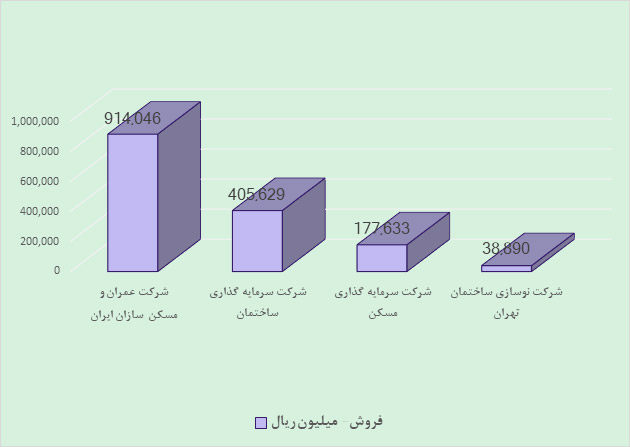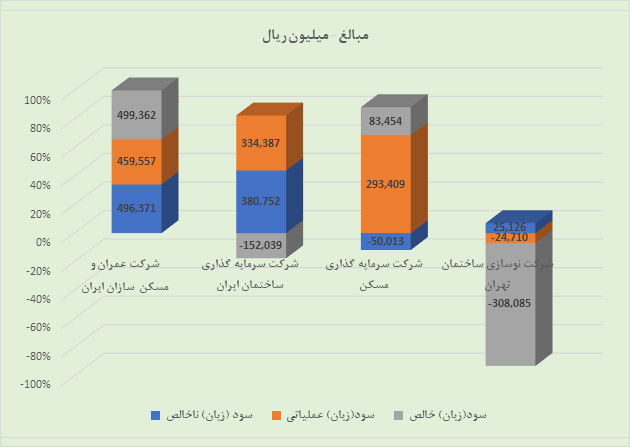SWOT analysis Introducing the strengths, weaknesses, opportunities and threats of Iran's construction company and housing builders are:
| Strengths | Opportunities |
|---|---|
| 1) Work experience in various and large projects 2) appropriate organizational interactions with organs, organizations and institutions 3) The spirit of appropriate participation of employees 4) Having managers with experience in doing things with minimal human resources and high productivity | 1) Increasing the average level of education and technical knowledge 2) Increasing government support for the construction industry 3) The volume of worn-out fabrics in the country's big cities |
| weak points | threats |
|---|---|
| 1) Existence of regulatory restrictions 2) dependence on major shareholders 3) Failure to benefit from opportunities in some geographical areas of the country | 1) A large number of competitors in the country 2) Increasing the possibility of potential competitors entering this industry 3) High interest rate in the country 4) Increase in labor wages 5) Recessionary conditions governing the market 6) Decrease in people's purchasing power 7) An increase in the exchange rate and, as a result, an increase in the price of construction |
Solutions to cover the weaknesses and threats of the company
| Weaknesses and threats | Coverage solutions |
|---|---|
| Dependence on major shareholders | The plans of the company in the future development plans are partnerships with law firms, organizations and related institutions. |
| Failure to benefit from opportunities in some geographical areas of the country | Planning to identify other regions of the country in order to expand the company's field of activity. |
| Competitors in the country | Increasing productivity by reducing manufacturing costs and increasing the ability to compete with other competitors. |
| High interest rate in the country | Non-receipt of facilities by Iran's construction and housing companies |
Risk factors Major risks of the company:
The risk in Iran's construction and housing companies has been identified in the following ways:
The risk in Iran's construction and housing companies has been identified in the following ways :
1- Existence of variables influencing the construction industry such as interest rate fluctuation, exchange rate, inflation rate, materials and raw material rates
2- Existence of boom and bust periods in the housing market and the construction industry in general, the presence of new competitors in the market, the emergence of new technologies, etc.
3- The effect of political and economic sanctions (restrictions on the supply of raw materials) on the profitability of the company
4- Non-alignment of laws and policies of government bodies and offices related to the construction industry in the field of mass construction
1- Feasibility of projects (failure to realize the results and predictions of feasibility studies due to systematic risks)
2- Delay in project implementation
3- The risk of not providing liquidity on time
4- The risk of not selling products on time due to systematic risk
Feasibility risk of projects Major risks of the company:
Feasibility study has a great impact on the fate of the project. Many of the problems that arise during the project are caused by the inadequacy of the initial studies and the failure to realize the results and predictions due to systematic risks. Accuracy in project feasibility studies reduces the risk of delay in project implementation and costs exceeding the estimated amount. The feasibility report should provide investors with all the necessary information to make a decision. The project feasibility report includes 5 sections, which are:
- General project information
- Technical justification of the project
- Financial justification of the project
- Economic justification of the project
- Project risk analysis
Project delay risk
Considering that Iran Construction and Housing Builders Company is a company in the field of construction and implementation of projects, one of the major threats of the company is always the delay in the completion of projects. These delays are mainly caused by systematic risk factors. However, the company has identified the cause of delays in each project and, while eliminating the effective factors and reducing them, it puts the experiences gained in preparing and adjusting the implementation plan of other projects at the top of its agenda.
Liquidity risk
Considering that the operating period of building construction (from the time of defining the project and carrying out feasibility studies to operation and handing over) is 5 to 7 years, providing and managing the cash flow of the project is one of the most important issues. One of the most important risks in the construction industry is the lack of liquidity management. For this reason, the company has balanced the portfolio of assets in order to manage liquidity risk.
The following actions are examples of doing this:
- Financing through pre-sale.
- Choosing a general contractor to reduce liquidity risk.
- Correcting and balancing the portfolio of company projects.
- Participation in construction.
- Exchange of built units with contractors instead of cash payment.
Comparing the company with similar companies


